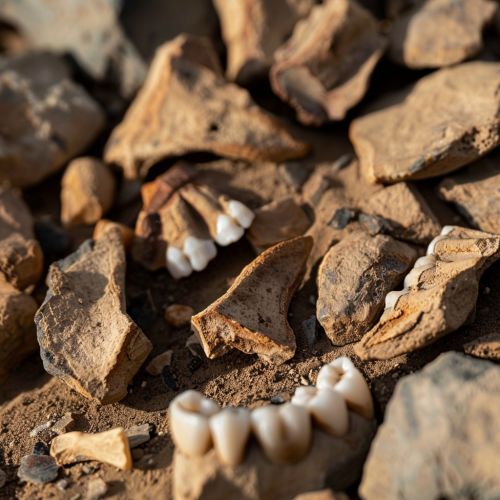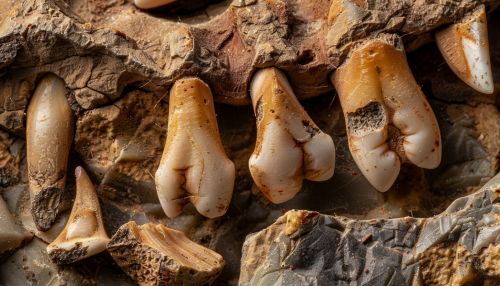Leidyodus
Overview
Leidyodus is a genus of extinct mammal from the Eocene epoch, belonging to the family Apatemyidae. The genus was first described by paleontologist Joseph Leidy in 1873, making it one of the earliest identified members of the Apatemyidae family. Leidyodus is known from several fossil specimens, primarily teeth and jaw fragments, which have been found in North America and Europe.
Taxonomy and Classification
Leidyodus belongs to the family Apatemyidae, a group of mammals that lived from the Late Paleocene to the Early Oligocene. The Apatemyidae are part of the order Cimolesta, a diverse group of mammals that includes several extinct families. The exact phylogenetic position of Leidyodus within the Apatemyidae is still a matter of scientific debate, with some researchers suggesting a close relationship with the genus Apatemys, while others propose a more basal position within the family.
Description and Anatomy
The anatomy of Leidyodus is primarily known from dental and mandibular remains. The teeth of Leidyodus are characterized by a complex occlusal pattern, with high-crowned molars adapted for a diet of hard food items. The mandible is robust, suggesting a strong bite force. Unfortunately, due to the fragmentary nature of the fossil record, much of the postcranial anatomy of Leidyodus remains unknown.


Paleobiology and Ecology
The dental adaptations of Leidyodus suggest a diet of hard food items, possibly including seeds, nuts, and hard-shelled fruits. This dietary specialization likely influenced the habitat preferences of Leidyodus, with fossil evidence suggesting a preference for forested environments where such food sources would have been abundant. The ecological role of Leidyodus within these ecosystems is not well understood, but it may have been a significant seed predator and disperser.
Fossil Record
Fossils of Leidyodus have been found in several locations in North America and Europe, including the Green River Formation in Wyoming and the Paris Basin in France. These fossils primarily consist of teeth and jaw fragments, although a few postcranial elements have also been recovered. The fossil record of Leidyodus spans from the Early Eocene to the Late Eocene, a period of significant climatic and environmental change.
Evolutionary Significance
The evolutionary history of Leidyodus is not well understood due to the fragmentary nature of the fossil record. However, the genus represents an important component of Eocene mammalian faunas and provides valuable insights into the evolution and diversification of the Apatemyidae. Further research on the phylogenetic relationships and morphological evolution of Leidyodus may shed light on broader patterns of mammalian evolution during the Eocene.
